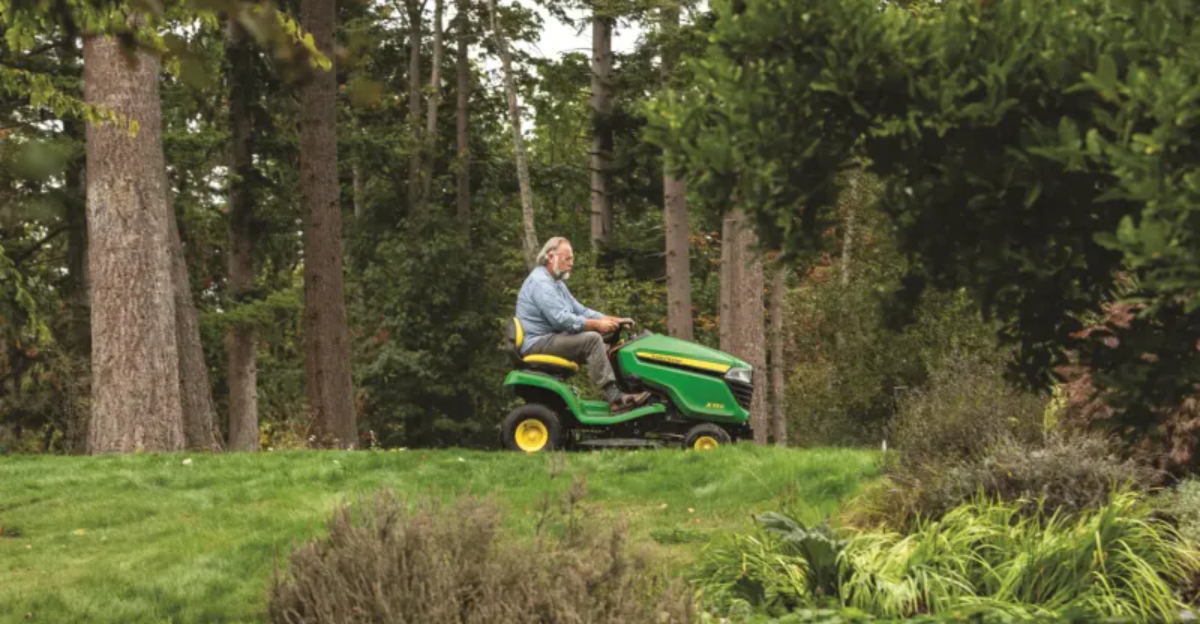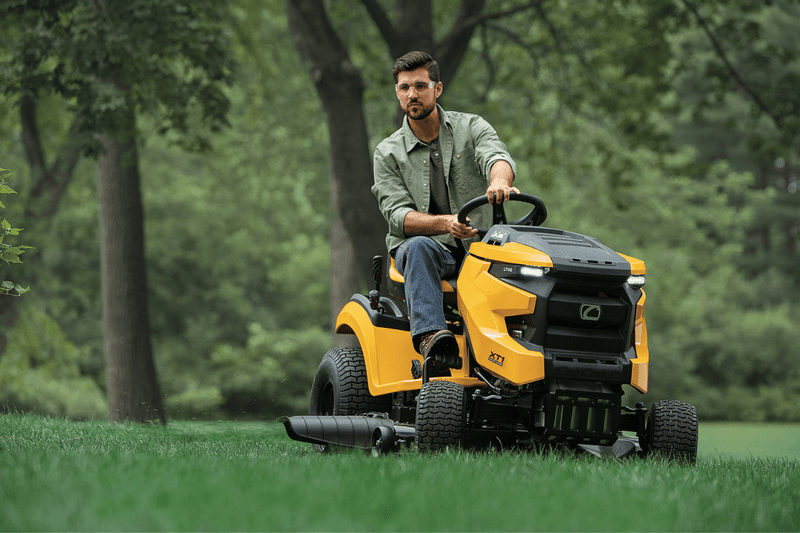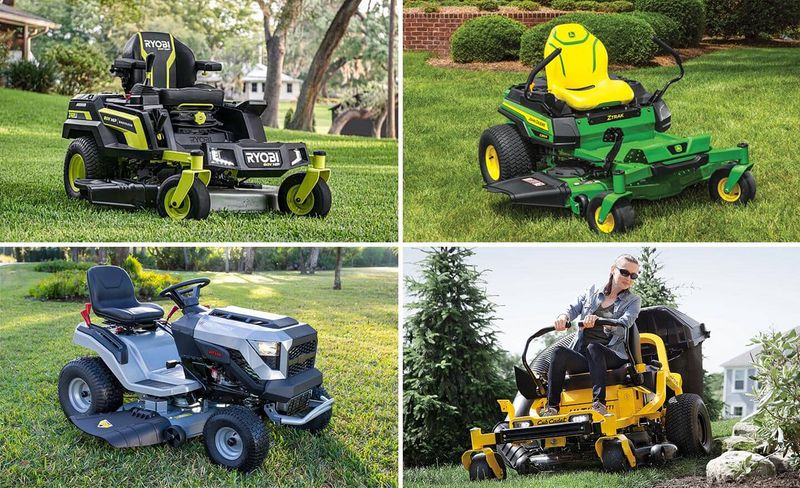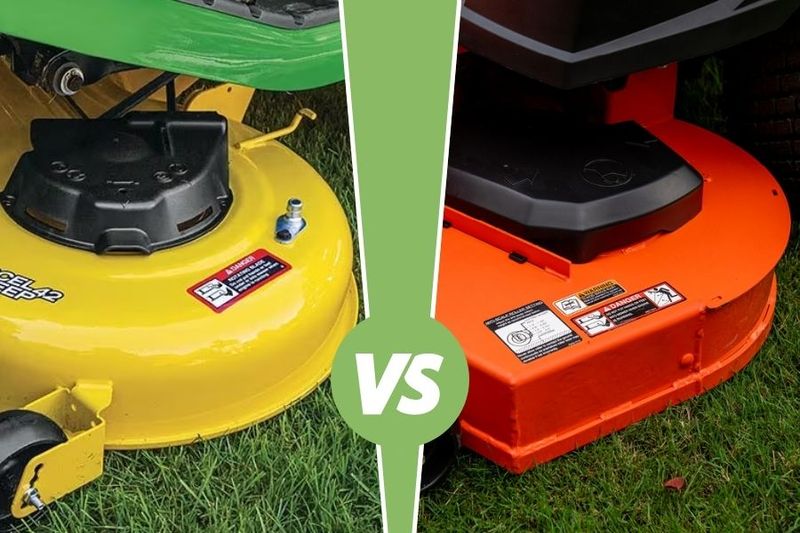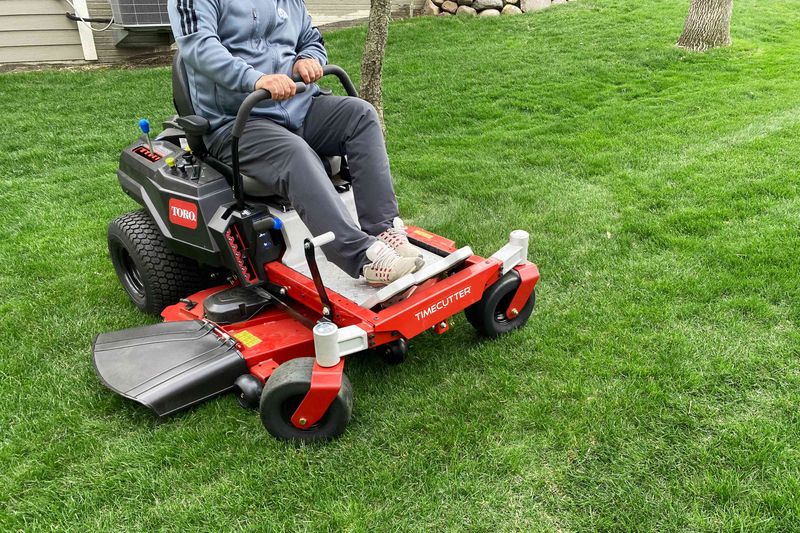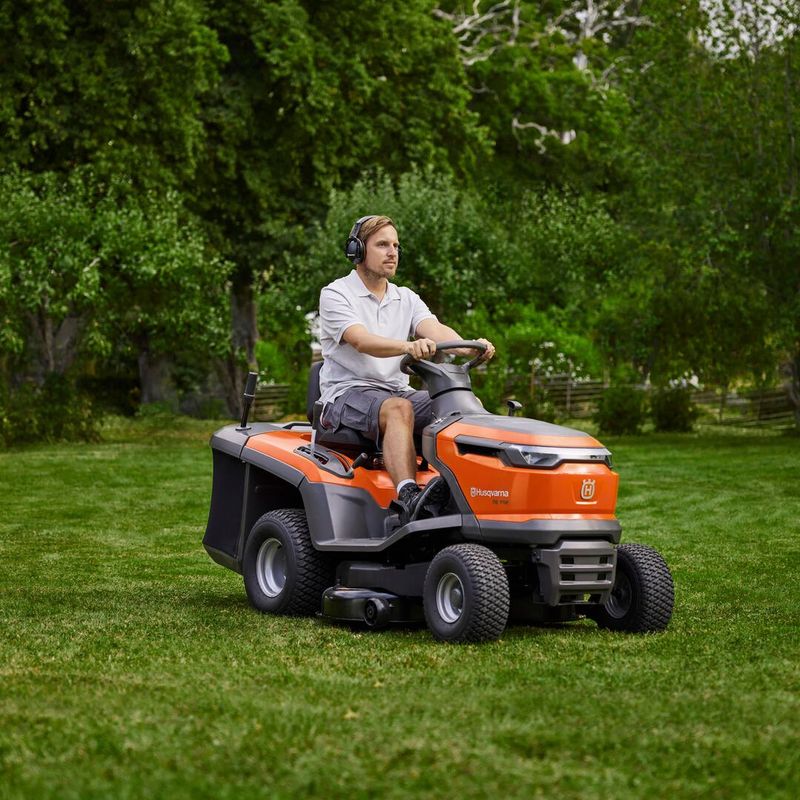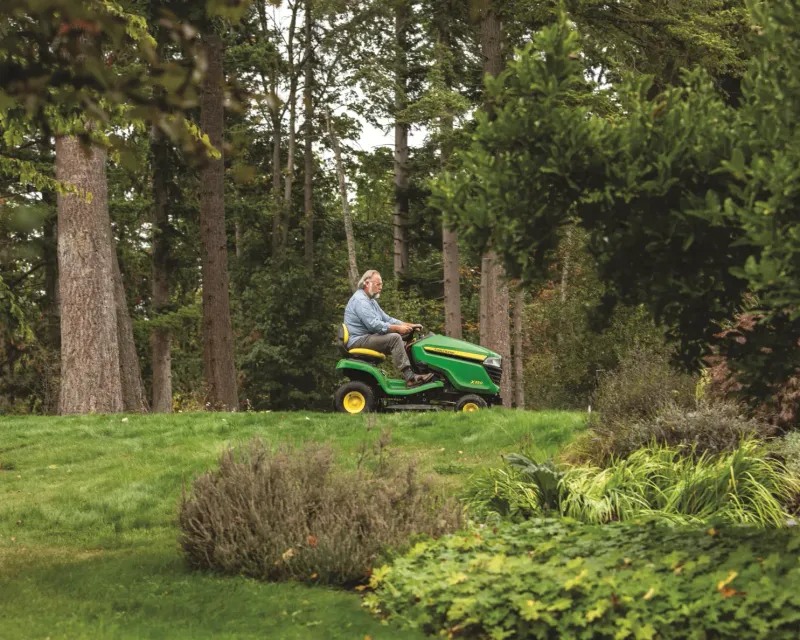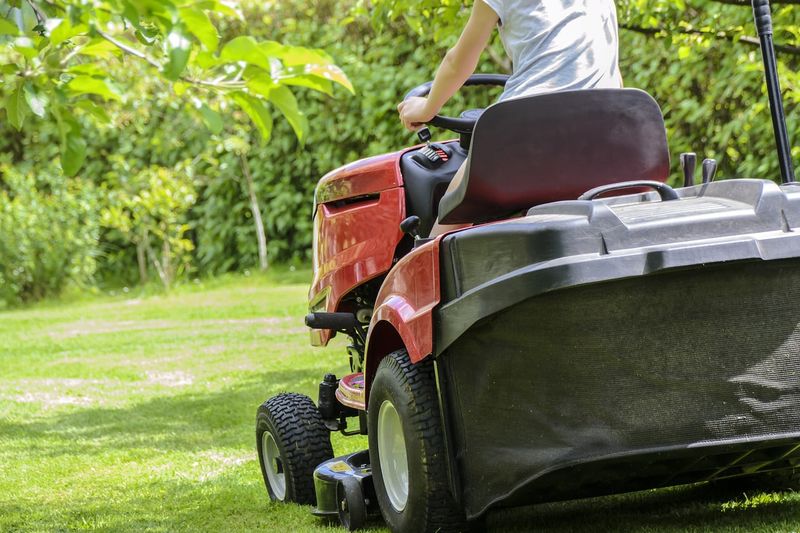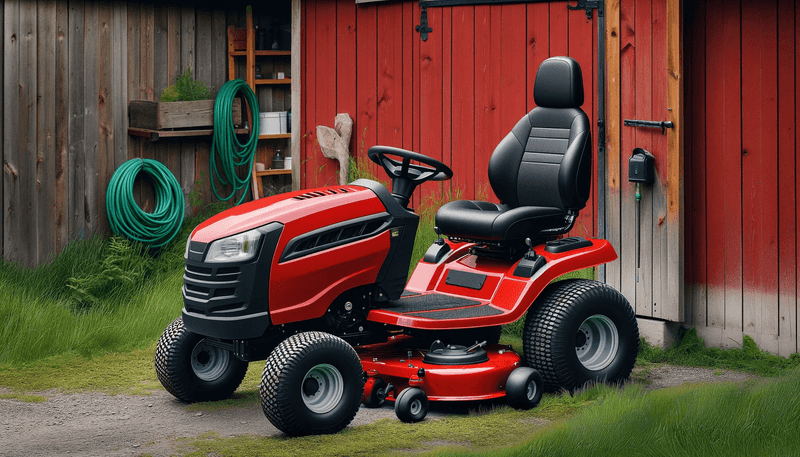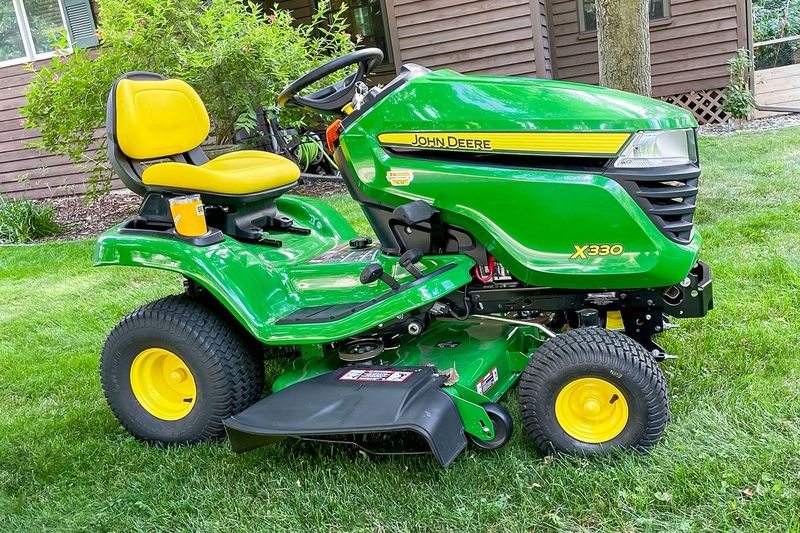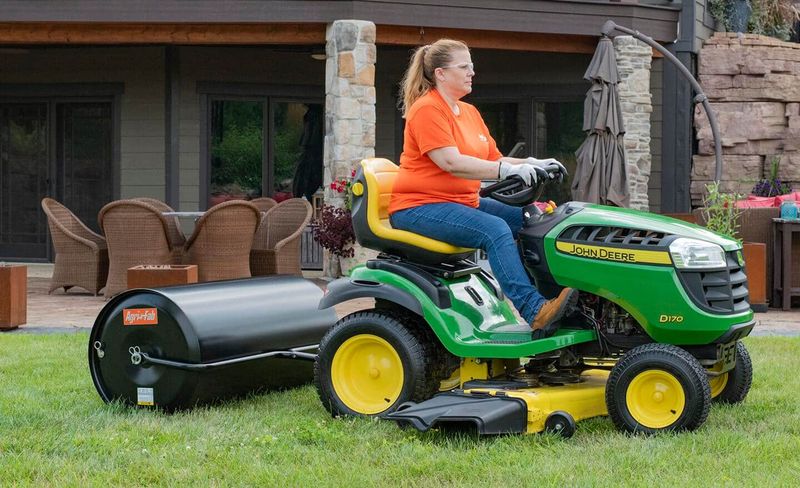Choosing between a riding mower and a lawn tractor can be a tough decision for any homeowner.
Each has its unique advantages, depending on your yard’s size, terrain, and your specific needs.
To help you make the best choice, here’s a detailed comparison covering ten essential aspects.
1. Yard Size Matters
For those with small to medium-sized yards, particularly between half an acre to a full acre, a riding mower could be your best friend. Its compact design allows it to navigate easily around residential lawns without overwhelming the space.
Conversely, for larger properties or those with varying elevations, a lawn tractor shines. With more power and stability, it can manage expansive areas over one acre with ease, providing a smooth cut over uneven terrain.
Choosing the right machine based on your yard size ensures efficiency and a pristine appearance, saving you time and effort.
2. Maneuverability
Riding mowers boast a tighter turning radius, making them perfect for gardens brimming with trees, flower beds, or other obstacles. Their nimbleness is unmatched, allowing you to weave around intricate landscapes effortlessly.
In contrast, lawn tractors are built for open spaces. Although they aren’t as swift in tight corners, their robust design is ideal for vast expanses. If your lawn resembles a small park, a lawn tractor might be more suitable.
By considering your lawn’s layout, you can determine which type offers the best maneuverability for your needs.
3. Cutting Power & Deck Size
Riding mowers typically feature smaller cutting decks, ranging between 28 to 42 inches. This size is perfect for standard residential lawns, providing a neat and controlled cut.
On the other hand, lawn tractors offer larger decks, often between 42 to 54 inches or more. This allows them to cover more ground in a shorter time, making them ideal for larger properties.
Assessing your lawn’s requirements will help you choose the machine with the right deck size, ensuring an even and efficient mowing experience.
4. Engine Strength
Riding mowers come equipped with lighter engines, tailored for basic mowing needs on flat terrains. They are perfect for those who require no-frills operation without extra power demands.
For tasks that involve hills, hauling, or additional accessories, lawn tractors excel with their more powerful engines. They are designed to tackle tougher jobs, making them indispensable for challenging landscapes.
Understanding the engine strength you need will ensure your mower meets your yard’s demands, avoiding overworking or underutilizing your machine.
5. Versatility
Primarily designed for mowing, riding mowers focus on simplicity and efficiency. They’re best suited for those who want to stick to the basics without the need for additional features. In contrast, lawn tractors shine in versatility.
With the ability to support various attachments such as snowblowers, baggers, and carts, they transform into multifunctional yard tools. This adaptability makes them a valuable asset all year round.
Consider what tasks you plan to accomplish with your mower to determine which option offers the versatility you need.
6. Terrain Handling
Riding mowers perform best on flat or gently sloping lawns. Their design is optimized for smooth surfaces, providing a consistent and even cut without much fuss. Lawn tractors, conversely, are crafted for challenging terrains.
They handle rough, sloped, or uneven landscapes with ease, ensuring every blade of grass is trimmed perfectly. Evaluate your lawn’s terrain to choose the right machine that will offer the best handling and coverage, ensuring a pristine lawn with every mow.
7. Storage Needs
Riding mowers are compact and easier to store, making them perfect for tight spaces like sheds or small garages. Their smaller size ensures they fit comfortably without requiring much rearrangement. On the flip side, lawn tractors are larger and bulkier.
They demand more storage space, which might necessitate a bigger garage or dedicated storage area. Before purchasing, assess your storage capabilities to ensure your new mower fits seamlessly into your space without causing inconvenience.
8. Maintenance
Riding mowers pride themselves on simpler mechanics, making them easier and cheaper to maintain. For the DIY enthusiast, they offer straightforward servicing without complicated processes.
Lawn tractors, however, come with more intricate systems that might require professional maintenance. This can lead to higher servicing costs but ensures the machine’s longevity and performance.
Understanding the maintenance demands of each type can help you select the one that aligns with your mechanical skills and budget.
9. Cost
Generally, riding mowers offer a more affordable entry point, with prices ranging from $1,000 to $2,500. They are ideal for budget-conscious homeowners seeking efficient lawn care.
In contrast, lawn tractors often require a higher investment, usually starting at $2,000 and going beyond $4,000, depending on features. Their price reflects their capabilities and versatility.
Assess your budget and lawn care needs to determine which option provides the best value for your investment, ensuring satisfaction without overspending.
10. Best For
Riding mowers are best suited for homeowners with smaller lawns, tight spaces, and basic mowing needs. Their design caters to those who seek simplicity and efficiency without additional frills.
Lawn tractors, however, are the workhorses for property owners with large areas, challenging terrains, and various tasks. Their robust build and versatility make them indispensable for comprehensive lawn care.
By evaluating your specific lawn requirements, you can determine which machine is the best fit for your lifestyle and property demands.
